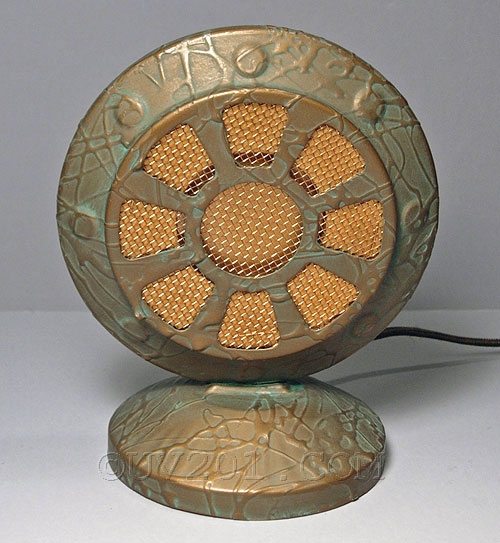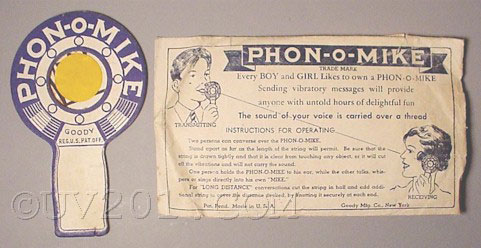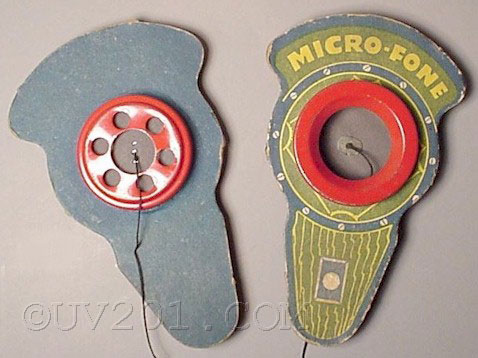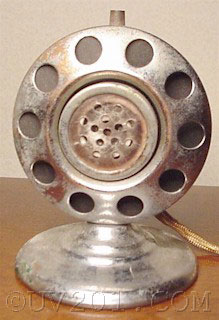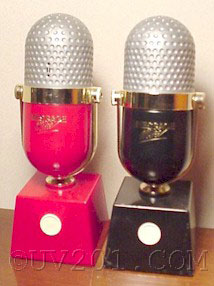|
Microphone Novelties |
|
|
|
|
| As radio
broadcasting gained popularity, images of performers behind the
microphone flooded into the public consciousness, and there were plenty
of manufacturers eager to capitalize on the radio craze.
There were a variety of simple, cheap carbon microphones produced which were designed to hook into a home radio to allow the kids to play announcer. The BMS Home Broadcaster is probably the nicest of this genre. Made in the late 1920's by the Brooklyn Metal Stamping Company, it had a faux bronze finish and "dribbled paint" texture which presages Jackson Pollock's painting style. It was "The New Idea For A Radio Party". |
|
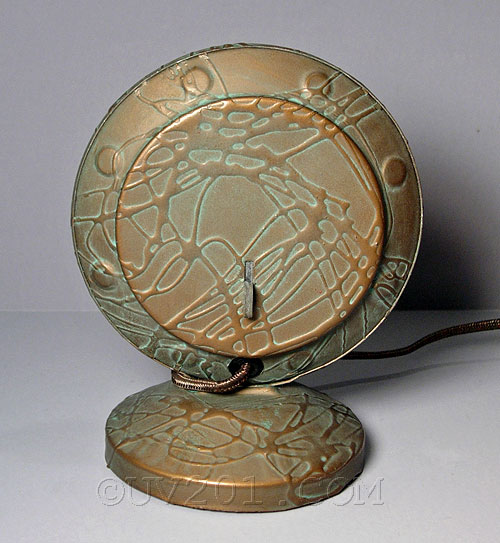 |
|
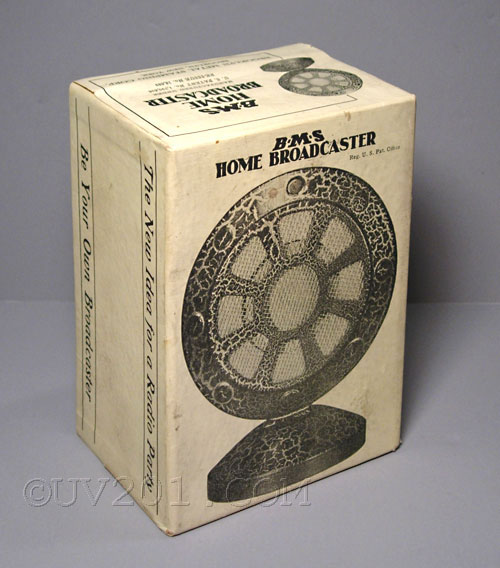 |
|
|
|
|
|
|
|
| The two items shown above brought the classic tin-can-and-string telephone concept into the radio age, with images of ring mount microphones. The "Phon-O-Mike" was a 1930's premium giveaway item from Coco Wheats breakfast cereal, and were made entirely of cardboard. The "Micro Fone" was of higher quality and worked surprisingly well. The red piece was painted metal, and it had a paper diaphragm. | |
| The "microphone" to the right is not a microphone at all. It is an electric cigar lighter mimicking the familiar broadcast microphone housing common in the 1920's. Pressing the button on top energizes a heating element behind the mica sheet in the center. Presumably, it got hot enough to light your smoke before it set the house on fire. It is about 3 inches high. |
|
| The "Message Mike" was made in Japan by Waco, probably in the 1960's, . Resembling the RCA 77, it is actually a tiny tape recorder using an endless loop of 1/8 inch tape which can record for about 15 seconds. It is activated by lifting it, and will play whatever is recorded on the tape continuously. Pressing the white button on the front puts it into record mode. When the button is released, it returns to the play mode. |
|
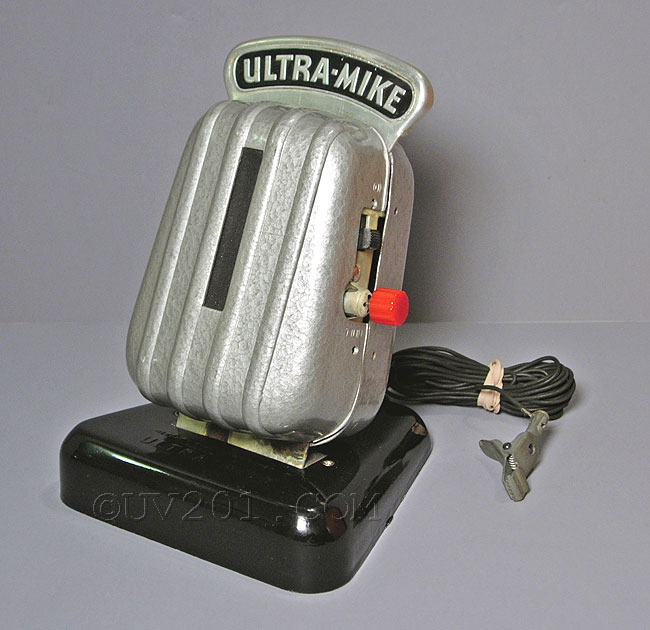 |
|
| The model
UM-100 "Ultra-Mike" was made by the Mercury Electronic Laboratories of
Chicago. It was a wireless microphone which would broadcast to any
nearby AM radio. It cost $12.95 when new in the 1950's. It
uses a single 1L4 tube operating as an RF oscillator, modulated by a
crystal microphone element. It was powered by a 45 volt B-battery
and a single D-cell for the filament. An antenna wire emerged from
the bottom of the unit. The frequency could be adjusted to a quiet
spot on the AM dial by turning a small red Catalin knob on the side.
The blurb on the carton promised the buyer "an amazing electronic engineering achievement" and a microphone which was "equal in many ways to our present day professional type instruments costing up to $75.00". It was perfect for the executive, or for use in the nursery, sick room, or factory. It could also be used as a "detectophone" by the enterprising junior detective who wondered what went on in his parents' bedroom, or between his big sister and her boyfriend. It was "Tomorrow's Miracle Today", but wireless mikes very much like it were sold as early as the 1930's. |
|
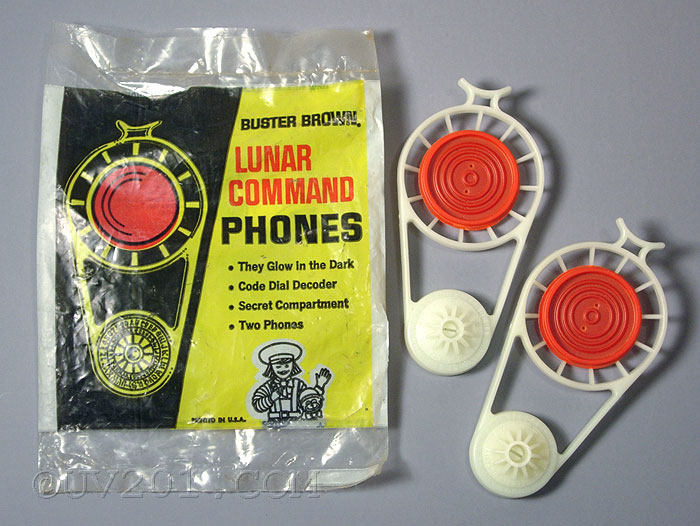 |
|
|
This set of space-age string telephones was a giveaway item from a Buster
Brown shoe store. The concept is the same as the Phon-o-Mike and the
Micro-Fone, but these are probably from the 1960's, in the days of the
Apollo program. As always, you got what you paid for, which wasn't much. The secret compartment was barely big enough for a couple of coins, but that was just enough for an emergency ration of soda and candy. The string was not included, however. The intrepid lunar explorers were expected to raid mom's sewing basket for this precious commodity! |
|
